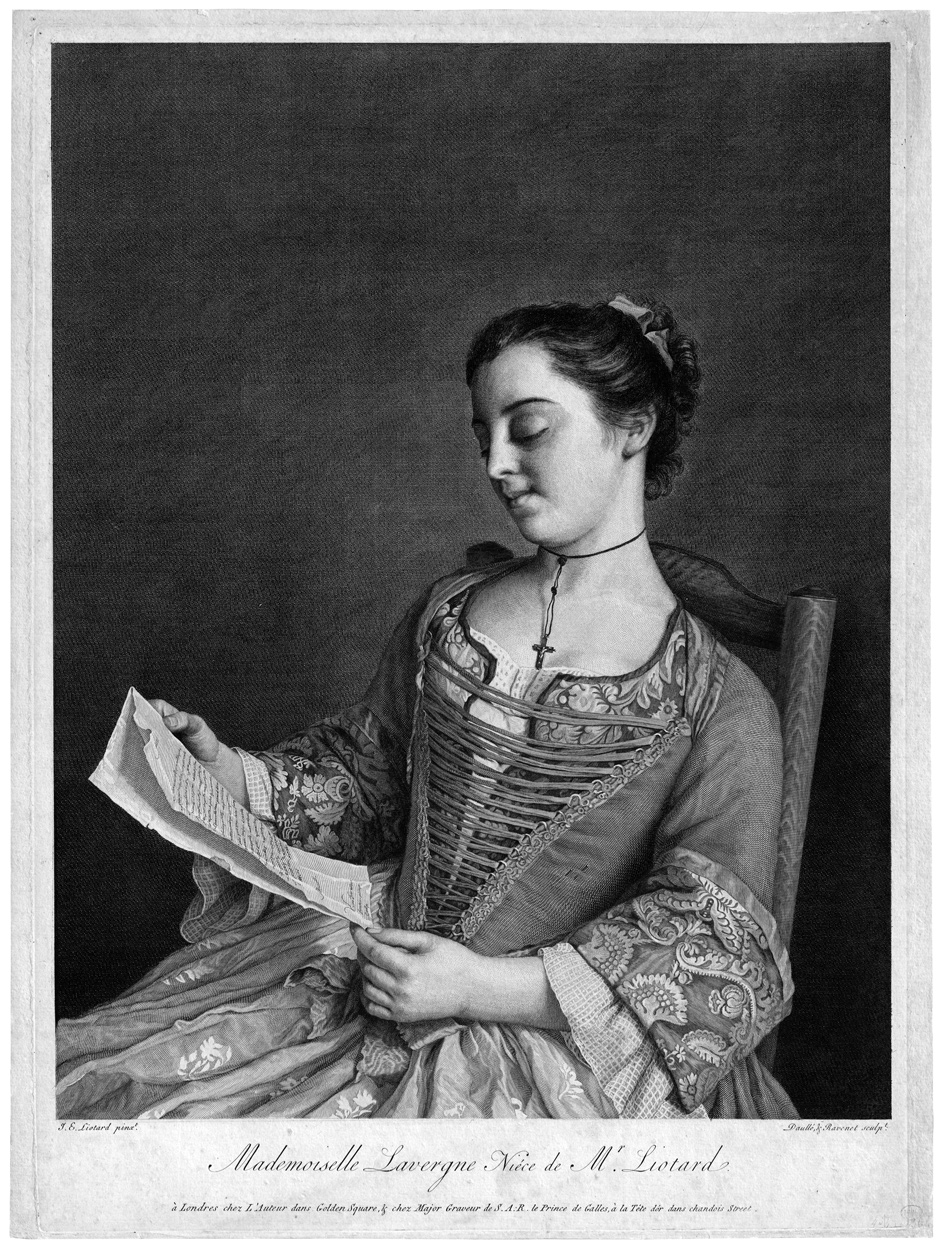Loading the page ...
Jean Etienne Liotard
(1702–1789, Geneva)
After. Mademoiselle Lavergnée, Nièce de Mr. Liotard (La Liseuse). Etching and engraving by Jean Daullé and Simon François Ravenet. 58.5 x 42.5 cm. Circa 1755. Firmin-Didot 347; Inventaire du Fonds Français 82; Tilanus 53.
This magnificent, large format print reproduces one of Liotard’s most outstanding works in its original size and in reverse. It is the pastel portrait of his niece, Mademoiselle Lavergnée, which Liotard painted in 1746 in Lyon while on his way to Paris. This undisputed masterpiece is now in the Rijksmuseum in Amsterdam. A second, later reduced version is kept in the Gemäldegalerie Alte Meister, Staatliche Kunstsammlungen, Dresden (see R. Loche, M. Roethlisberger, Liotard. Catalogue, sources et correspondance, Doornspijk 2008, vol. I, p.361 ff, no. 159).
The assiduous Liotard resided in many major European cities in the course of his lengthy career as an artist. From 1746 to 1753 he lived and worked in Paris, where he was inundated with commissions from the court and the nobility. Nonetheless, after a period of seven years in the city, he felt the need to move on and seek new challenges. The rivalry of his fellow artists in Paris and the refusal to admit him to membership of the Royal Academy might well have propelled his decision. In 1753 Liotard moved to London, where he stayed for two years. Despite the considerable renown he enjoyed among connoisseurs and collectors, including Horace Walpole, the peintre turc, whose long flowing beard and exotic garb caused quite a stir, was treated as an outsider here, too. Not long after his arrival in England, therefore, Liotard demonstrated business acumen by publishing reproductive prints after his own works as a way of promoting his art. He commissioned the present print from the French engravers, Simon François Ravenet (1706 Paris – 1774 London) and Jean Daullé (1703 Abbeville – 1763 Paris), both outstanding representatives of their profession, who worked under Liotard’s direct supervision. The inscription makes it clear that the engraving was distributed by Liotard himself from his address at Golden Square and by the London publisher, Thomas Major. The success of the business venture was evidently modest, for the print is rare, which would indicate that it was published only in a small edition. In terms of technical mastery and wealth of detail the engraving can certainly hold its own against Liotard’s original, which must have been very much in the artist’s own interests. The highly refined etching technique with its variety of delicate and differentiated hatching patterns and the subtle distribution of light confirm that the print was made under Liotard’s direct supervision. The play of the mild light on the girl’s gentle face and the rich brocade decorations on her clothing are reproduced so convincingly that the material appears to be almost tangible. This is undisputedly one of the finest and most impressive reproductive prints of the 18th century. A superb, richly differentiated and crisp impression with fine margins around the platemark. Slight ageing and minor abrasions in the margins, otherwise in excellent condition. From the collection of François Heugel (Lugt 3373).
